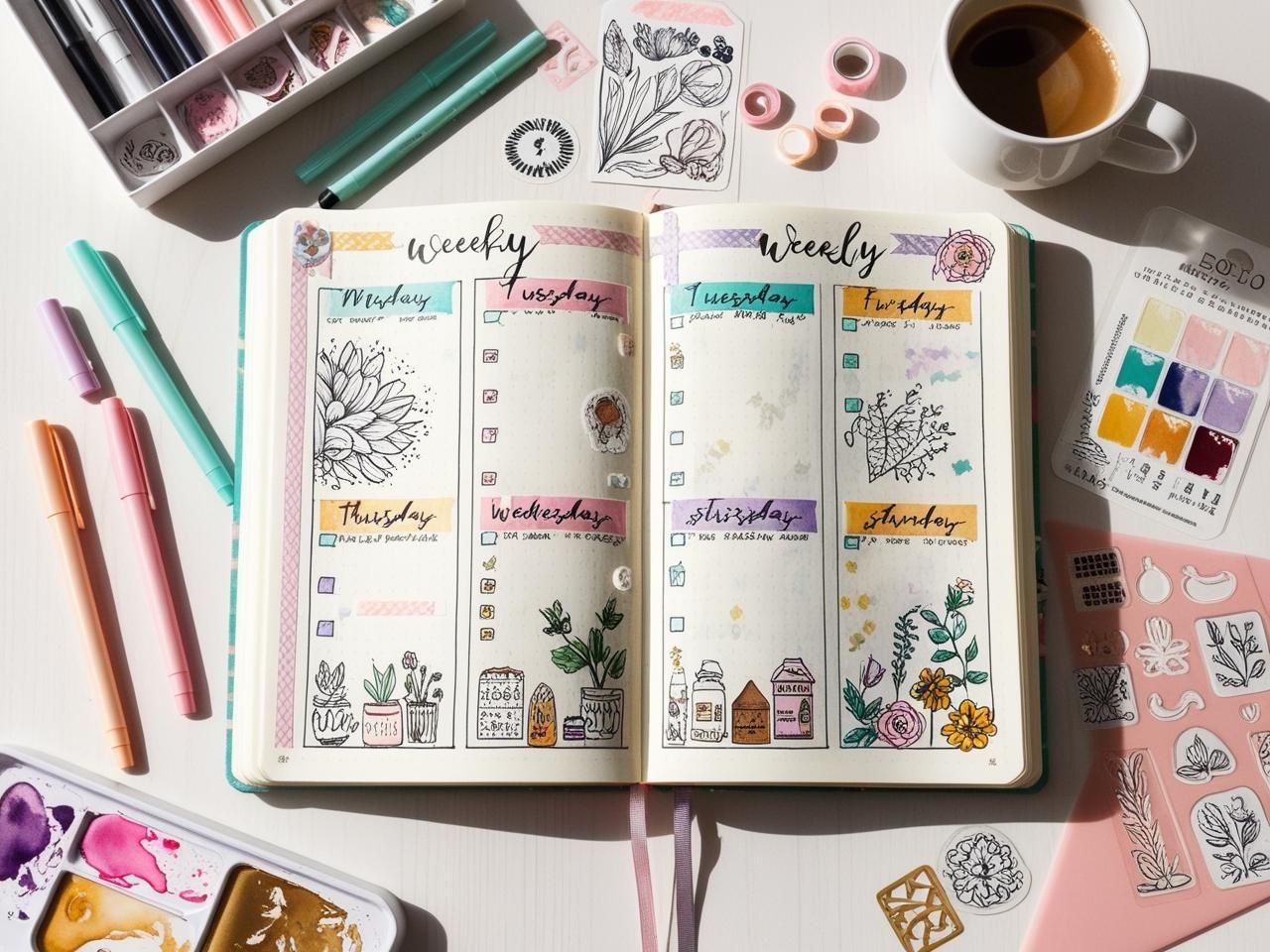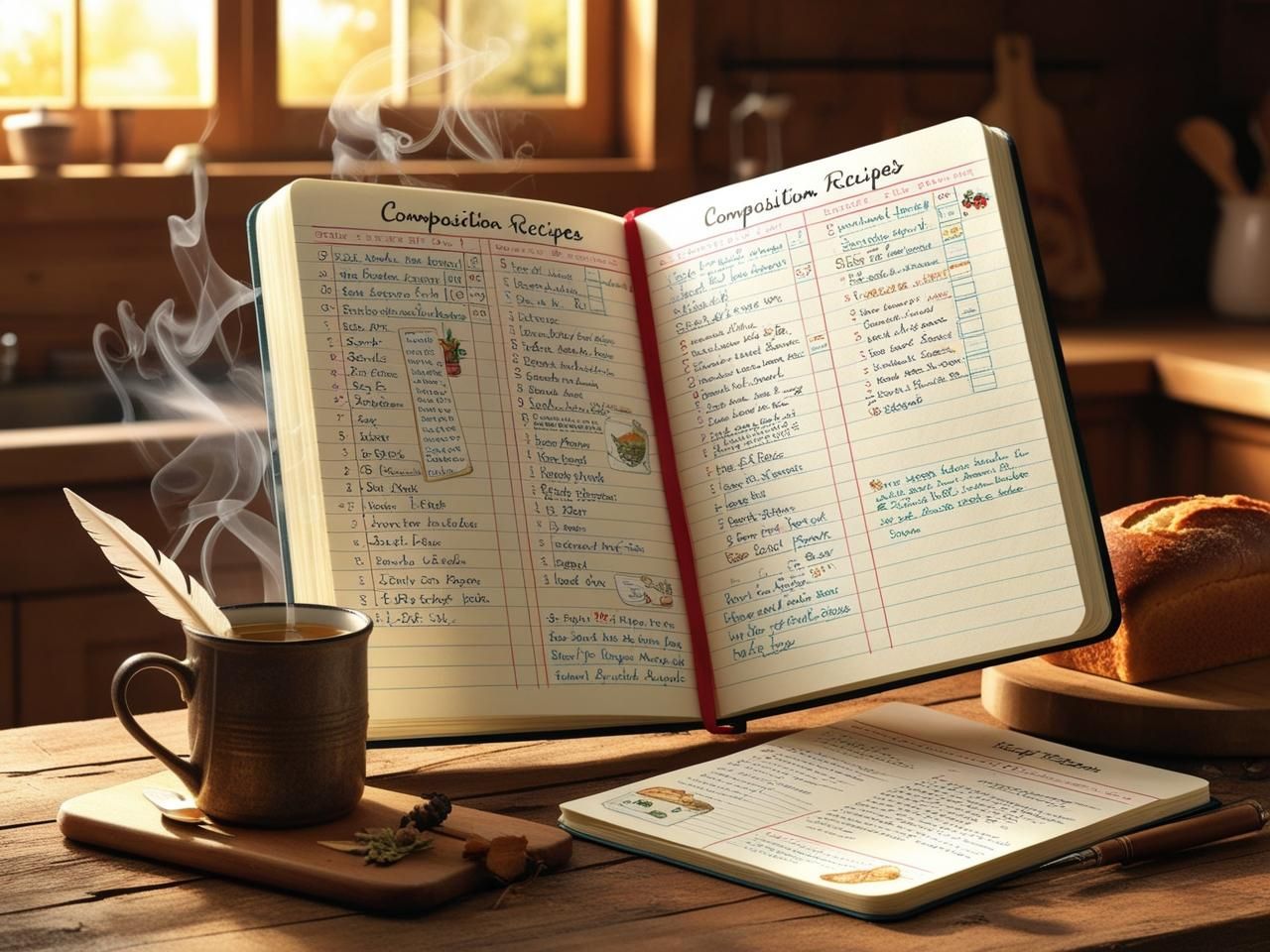- COMPOSITION NOTEBOOK
- Customization
- Composition Notebook Backgrounds
Composition Notebook Backgrounds
- Category: Customization

Are you tired of the same mundane backgrounds cluttering your notes and creative projects? You’re not alone! Many of us seek that perfect blend of functionality and aesthetic appeal to elevate our work, and composition notebook backgrounds can deliver just that. In this blog post, we’ll delve into the captivating world of these versatile designs, showcasing how they can transform your notes, crafts, and creative endeavors. Whether you’re a student looking to spice up your study materials or an artist searching for inspiration, we’ll guide you through selecting the ideal composition notebook background to suit your style and needs. Let’s ignite your creativity together!


Table of Contents
ToggleThe History and Significance of Composition Notebooks
Composition notebooks have become a staple in educational settings, serving as essential tools for students and educators alike. Their storied history and versatility in various creative spaces showcase their enduring relevance. Below, we explore the origins of composition notebooks and their evolution, highlighting their significance both in the classroom and beyond.
Origins of Composition Notebooks
Composition notebooks trace their roots back to the 19th century, emerging as a practical solution for students who needed a simple, affordable means of recording their thoughts and assignments.
- Early Forms: The original composition books were often bound in leather or cardboard, featuring a simple stitched spine. This design allowed for easy handling and storage.
- Transition to Mass Production: As education became more accessible, particularly in the United States, the demand for affordable writing supplies increased. In the late 1800s, manufacturers began mass-producing composition notebooks, which were sold at low prices to cater to students’ needs.
Iconic Features
The traditional composition notebook, often recognized by its distinctive black-and-white marbled cover, is characterized by several features:
- Sturdy Design: Composition notebooks are designed to withstand the rigors of daily use, making them ideal for both students and professionals.
- Wide Ruled Pages: Typically, these notebooks have either wide-ruled or college-ruled pages, providing ample space for note-taking and writing.
- Numbered Pages: Many composition notebooks come with numbered pages, allowing for easy organization and referencing.
Notable brands like Mead and Roaring Spring have become synonymous with quality composition notebooks, offering a variety of models that appeal to both students and artists.
Evolution in Education
The role of composition notebooks in educational settings has transformed significantly over the years:
- Standard Assessment Tools: They quickly became standard tools for teachers to assess students’ writing skills. Schools often adopted composition books for essays, journal entries, and homework assignments.
- Creative Expression: Beyond mere writing, these notebooks serve as platforms for students to engage in creative expression through art, poetry, and sketches. As a result, many students have personalized their notebooks with drawings, collages, and stickers, blurring the lines between function and art.
Today, brands like Moleskine, known for their high-quality, innovative designs, cater to a more artistic demographic, offering various styles such as “Moleskine Classic Notebook” and “Moleskine Art Sketchbook.” Their attempts to marry practicality with artistry have attracted a following among writers, artists, and creatives.
Composition Notebooks in Creative Spaces
While originally designed for educational purposes, composition notebooks have found a permanent home in creative spaces, becoming tools for artists and writers alike:
- Journaling and Writing: For many writers, composition notebooks serve as a sanctuary for brainstorming concepts and drafting stories. They provide an unfiltered space where ideas can blossom.
- Art Journaling: Creatives utilize these notebooks for doodling and sketching, with brands like Strathmore offering specific sketchpad hybrids that cater to both writing and drawing.
- Bullet Journaling: In recent years, the trend of bullet journaling has emerged, and composition notebooks are often favored for this. Their customizable nature makes them perfect canvases for organizational layouts.
Why Choose Composition Notebooks?
Here are a few reasons why composition notebooks continue to be popular:
- Affordability: They’re readily available and cost-effective compared to other notebooks with special designs.
- Durability: The sturdy covers and binding mean they can stand up to wear and tear, making them suitable for all environments—from classrooms to studios.
- Simplicity: The minimalist design allows for focus on content rather than aesthetics, appealing to students and professionals who prefer straightforward tools.
Key Benefits of Using Composition Notebooks
| Benefit | Description |
|---|---|
| Versatility | Can be used for writing, sketching, or journaling. |
| Durability | Built to withstand heavy use, ideal for students and creatives alike. |
| Affordability | Inexpensive option for high-quality writing and artistic endeavors. |
| Organizational Features | Numbered pages and margins assist in keeping thoughts organized. |
By embracing the composition notebook in various contexts, individuals can tap into a rich tradition of written expression while enjoying the functionality and convenience these notebooks provide. As they continue to inspire both students and artists, composition notebooks hold a significant place in the history of education and creativity.
Popular Styles of Composition Notebook Backgrounds
When it comes to composition notebooks, the background design can be as crucial as the content written within. The right background not only enhances the aesthetics but can also reflect personal style and boost creativity. Below, we delve into some of the most popular styles of composition notebook backgrounds, including classic marble, vibrant colors, and themed designs, while providing practical examples and their potential applications in various projects.
Classic Marble Patterns
Marble backgrounds are timeless and elegant, providing a sophisticated touch to any composition notebook. The classic black-and-white marble pattern is particularly popular, but variations in color can add a unique twist.
Benefits of Marble Patterns:
- Timeless Appeal: Marble never goes out of style, making it a safe choice for any age group or setting.
- Versatility: Pairs well with both casual and formal note-taking scenarios.
- Professional Appearance: Great for business, school, or personal use where a polished look is desired.
Examples:
- Tonal Marble Composition Notebook by Cambridge: This notebook features a stunning gray marble design that’s eye-catching yet understated.
- Five Star Marble Composition Notebook: Available in multiple colors, this notebook combines functionality with style, making it a must-have for students.
Vibrant Colors
For those who wish to showcase their personality, vibrant colors are an excellent choice. These backgrounds can range from bright neon shades to pastel hues, catering to a variety of tastes and preferences.
Advantages of Vibrant Backgrounds:
- Eye-Catching: Makes your notes stand out and can be motivating during study sessions.
- Expresses Individuality: Helps express personal style—perfect for creative individuals.
- Variety: Available in numerous colors and patterns, offering endless options.
Examples:
- Eco Blend Composition Notebook by Black n’ Red: This notebook comes in a lively red cover that adds vibrancy while also being eco-friendly.
- Crafter’s Square Neon Composition Notebook: Featuring fluorescent colors, it’s perfect for students who love to personalize their school supplies.
Themed Designs
Themed designs offer a fantastic way to align your composition notebook with specific interests or hobbies. Themes can vary widely, incorporating everything from nature to pop culture, allowing for engaging and fun representation.
Why Choose Themed Designs:
- Personal Interest: Align your notebook with interests like animals, sports, or movies.
- Inspiration: A favorite design can inspire creativity and positivity during note-taking or journaling.
- Conversation Starters: Eye-catching designs can facilitate discussions among peers.
Examples:
- Moleskine Star Wars Limited Edition Notebook: Perfect for fans of the saga, this notebook features iconic imagery from the movies, an exciting find for any Star Wars enthusiast.
- Pug Life Composition Notebook by Celestial Gifts: This adorable notebook showcases playful pug designs, making it ideal for dog lovers or anyone who appreciates cute aesthetics.
Comparison Table of Styles
| Style | Key Features | Ideal For | Example Product |
|---|---|---|---|
| Classic Marble | Timeless, elegant, professional | School, business, personal | Five Star Marble Composition Notebook |
| Vibrant Colors | Bright, expressive, motivating | Students, creatives | Eco Blend Composition Notebook by Black n’ Red |
| Themed Designs | Reflects personal interests | Hobbyists, fans | Moleskine Star Wars Limited Edition |
The choice of composition notebook background can significantly influence not only its visual appeal but also its functionality for various projects. Choosing a design that resonates with your personal style can ultimately enhance your overall experience, whether you’re taking notes in class, jotting down creative ideas, or keeping a journal.
Choosing the Right Background for Your Project
When embarking on a new project, one of the foundational elements you need to consider is the background. The right background can enhance the overall effectiveness and appeal of your work. Here we will explore key factors that will help you make informed decisions when selecting a composition notebook background.
1. Understanding Color Psychology
Color plays a significant role in evoking emotions and conveying messages. Different colors can stimulate viewer engagement or induce certain feelings. Here’s a breakdown of some common colors and their psychological impacts:
- Blue: Calming and trustworthy, making it ideal for professional or educational projects.
- Red: Energetic and attention-grabbing, best for projects intended to motivate or incite action.
- Green: Represents growth and tranquility, suitable for environmental or wellness topics.
- Yellow: Cheerful and optimistic, can stimulate creativity but should be used in moderation.
Practical Example: If you are creating a presentation for a financial seminar, consider using a sleek navy blue background, perhaps with white text. Brands like Moleskine offer high-quality notebooks in various colors that can help reinforce your theme aesthetically.
2. The Importance of Contrast for Readability
Contrast is crucial in ensuring that your content is readable. A background that excessively blends with your text colors can cause strain and confusion for your audience. When selecting a background, keep these tips in mind:
- Choose darker backgrounds for light text to enhance visibility (e.g., charcoal gray with white).
- Light backgrounds work well with darker fonts (e.g., cream with dark green).
Comparison Table of Background and Text Combinations:
| Background Color | Text Color | Use Case |
|---|---|---|
| Dark Blue | White | Corporate reports |
| Light Gray | Black | Academic presentations |
| Beige | Brown | Nature-related projects |
| Bright Yellow | Dark Blue | Eye-catching marketing materials |
3. Matching Backgrounds with Content Types
The content you’re presenting should influence your choice of background. Each project type has specific tonal and visual requirements. Here’s a quick guide:
- Educational Projects: Use simple designs that avoid clutter. Lined or grid backgrounds can help emphasize note-taking or sketching (e.g., Five Star Composition Notebooks).
- Artistic Projects: Consider artistic backgrounds that complement the subject without overshadowing it. Textured papers or watercolor designs (like those from Strathmore) can enhance artistic presentations.
- Professional Presentations: Opt for minimalist backgrounds to keep the focus on the information (e.g., Leuchtturm1917 notebooks offer classic, professional designs).
4. Practical Considerations
When selecting a background for your project, also remember the practical aspects:
- Print Quality: Ensure the background you choose reproduces well in print. For instance, HP Premium Plus Photo Paper can help maintain vibrant colors in printed materials.
- Material and Texture: Different backgrounds can offer various textures. Consider if a smooth texture will aid in writing or if a rough texture will enhance visual interest. Brands like Rhodia offer notebooks with unique paper textures that may serve specific purposes better.
5. Final Tips on Choosing the Right Background
- Identify Your Audience: Understanding your audience can help tailor your background choice. For instance, brightly colored backgrounds may appeal to younger audiences.
- Test Your Examples: Try out several backgrounds with your actual content. Sometimes, seeing it in practice is more revealing than theory.
- Stay Consistent: If your project flows between different materials or environments, ensure your backgrounds maintain a consistent theme or color palette.
By employing these strategies, you can select backgrounds that will not only serve functional purposes but also enhance the overall aesthetic and effectiveness of your work. The right background can transform a standard project into a compelling and engaging experience for your audience.
Final Thoughts on Creative Use and Inspiration
In conclusion, composition notebook backgrounds serve as both a practical and artistic element in various projects. By exploring the diverse styles and historical context, you can make informed choices that elevate your work. We encourage you to explore and customize these backgrounds to discover the ideal combination that reflects your unique style and meets your specific needs. Happy creating!
RELATED POST
Composition Notebook by Pieffeweb | Cookie Policy | Privacy Policy | Disclaimer






